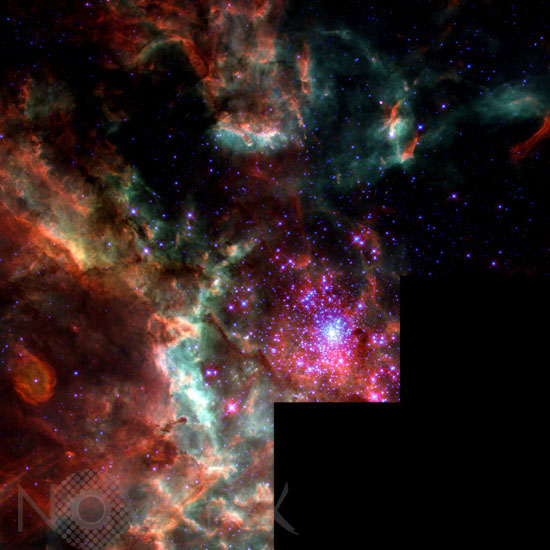Photo Agency - Astronomy - Space - Nature

Central part of 30 Doradus nebula
author: Nasa/Stsci/Novapix
reference: a-neb20-70004
Image Size 300 DPI: 12 * 12 cm
An image of a star-forming region in the 30 Doradus nebula, surrounding the dense star cluster R136. The image was obtained using the second generation Wide Filed and Planetary Camera (WFPC-2), installed in the Hubble Space Telescope. The picture shows a mosaic of the images taken with WFPC-2's four separate cameras. Three of the cameras, called the Wide Field Cameras, give HST its "panoramic" view of astronomical objects. A fourth camera, called the Planetary Camera, has a smaller filed of view but provides better spatial resolution. The image shows the fields of view of the four cameras combined into a "chevron" shape, the hallmark of the WFPC-2 data. The image shows a portion of a giant cloud of gas and dust in 30 Doradus, which is located in a small neighboring galaxy called the Large Magellanic Cloud about 160,000 light years away from us. The cloud is called a H II region because it is made up primarily of ionized hydrogen excited by ultraviolet light from hot stars. This is an especially interesting H II region because unlike nearby objects which are lit up by only a few stars, such as the Orion Nebula, 30 Doradus is the result of the combined efforts of hundreds of the brightest and most massive stars known.
Contact : Stéphane Aubin +33-(0)9-51-26-53-76
© Novapix - All rights reserved


